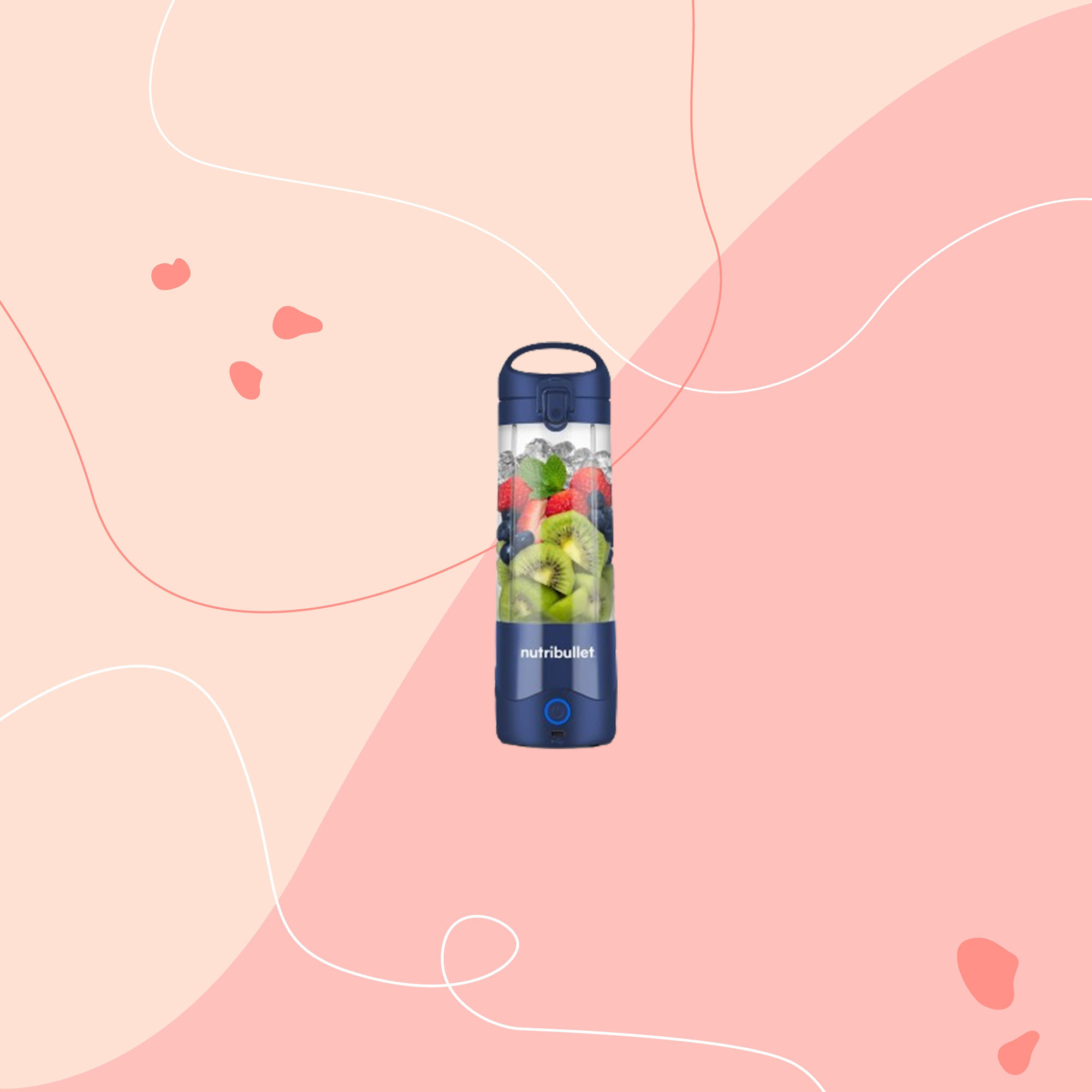
When it comes to single serve smoothie makers and blenders, Nutribullet is one of the go-to brands. And though the brand needs little-to-no introduction, the concept of a portable blender might be one you’re less familiar with.
The Nutribullet Portable Blender is the second rechargeable blender on offer from the brand. The older Nutribullet GO had a somewhat less convenient design that required you to remove the blades before drinking, which isn’t ideal when you’re out and about. With this newer design, the blades are integrated into the base of the cup, so once blended you can immediately start drinking.
As a fan of smoothies and protein shakes I’m always up for trying a new version of the best blenders. Although I did wonder how effective this small rechargeable blender would be, especially when it comes to blitzing tougher ingredients. On the whole though, it coped well with most foods I tried to blend. Read on for more details on what I used it for.
Nutribullet GO Portable Blender product specs
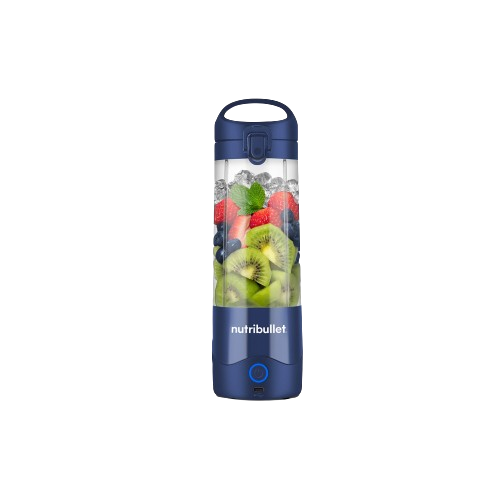
- Cup capacity: 475ml (Max fill line at 350ml)
- Weight: 0.71kg
- Size: 27.2 x 8 x 9.5cm
- Watts: 100W
Unboxing and first impressions
There were no big surprises when I unpacked this portable blender. In the box you get the motor base, cup, to-go lid and a USB-C charging cable. There’s no plug for the charging cable though, so you’ll have to supply your own.
One thing that I wasn’t expecting initially, was that the blade assembly and motor can’t be removed from the cup after blending. Together they form the base of the cup, so have to stay in position until the cup is empty.
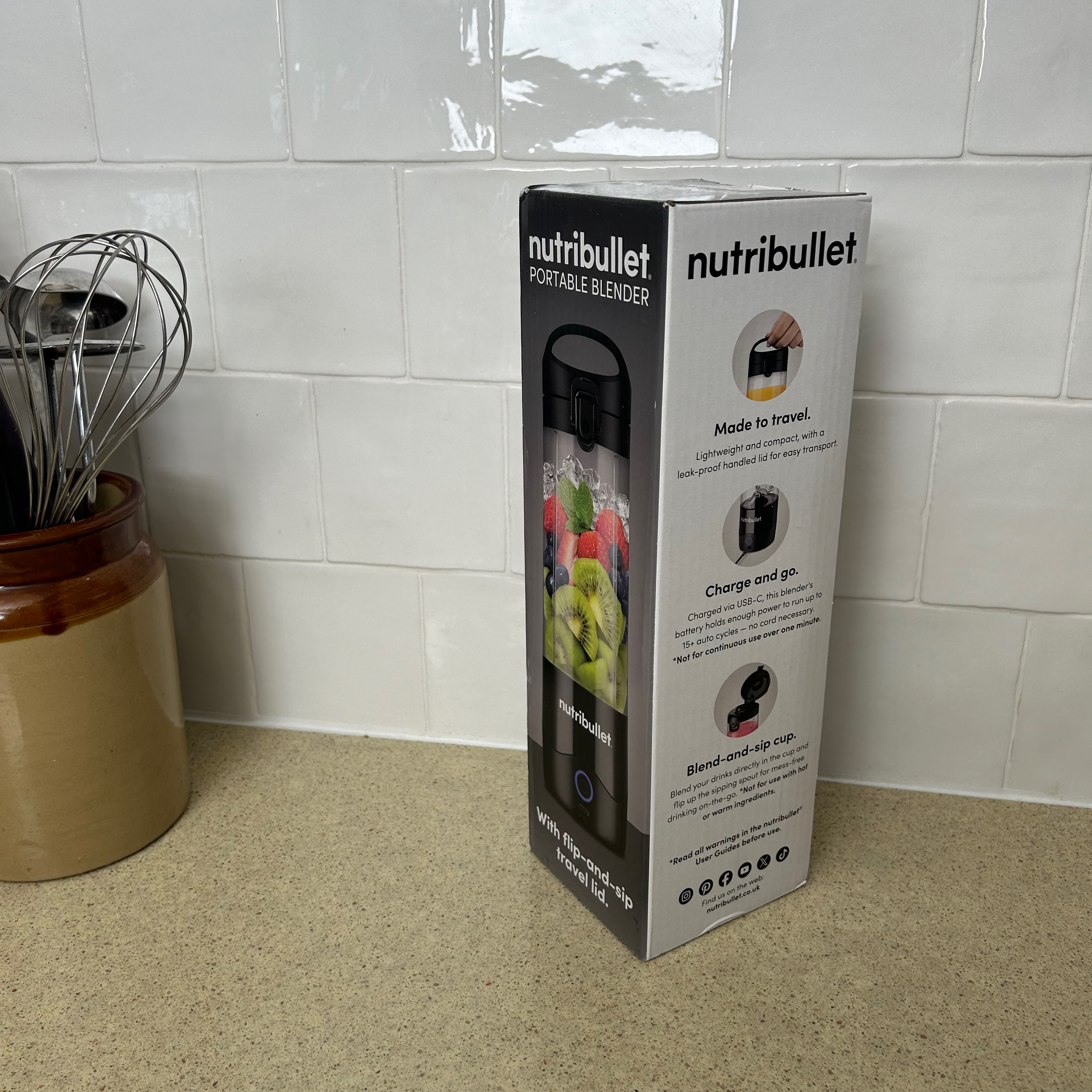
The charging cable plugs into the front of the motor base, just below the power button. The button itself is surrounded by a ring of six LEDs. These illuminate in sequence when charging and when they’re all illuminated, you know it’s fully charged.
You can check the battery level by pressing the power button for two seconds to see how many lights illuminate. The lights also turn red and flash in a variety of sequences to indicate various problems. And the errors section in the manual gives you the lowdown on what lights equate to what problem.
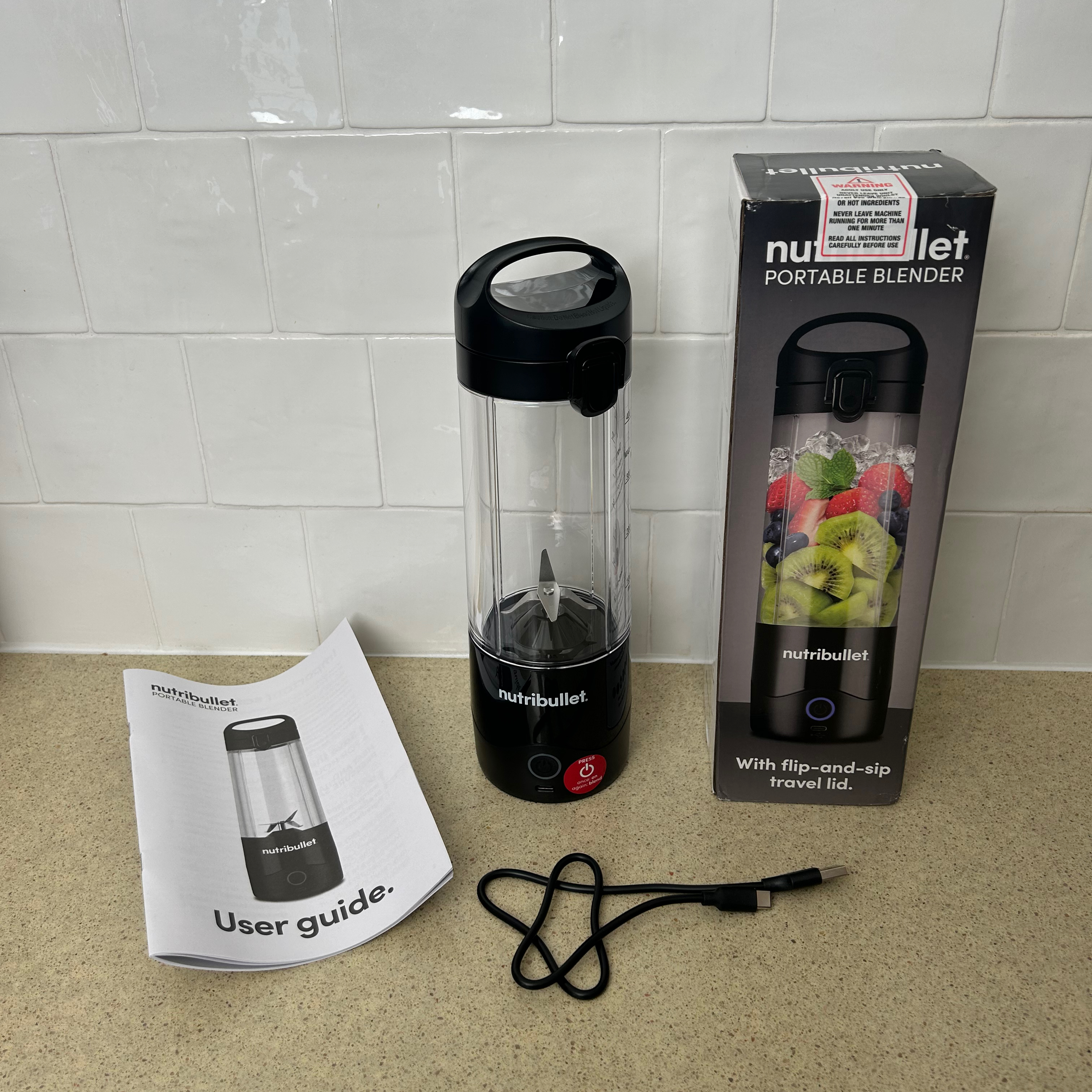
Pressing the power button initiates a 20 second blending cycle and the product information says it should be able to perform 15 blend cycles from one charge. So that translates to 5 minutes worth of blending.
It’s important to note though that the manual advises against blending for more than one minute and not more than nine blending cycles within a six minute period.
Despite the advertised 475ml cup capacity, the MAX fill line is actually 350ml, so if you like to make big gulpable drinks, you might be disappointed.
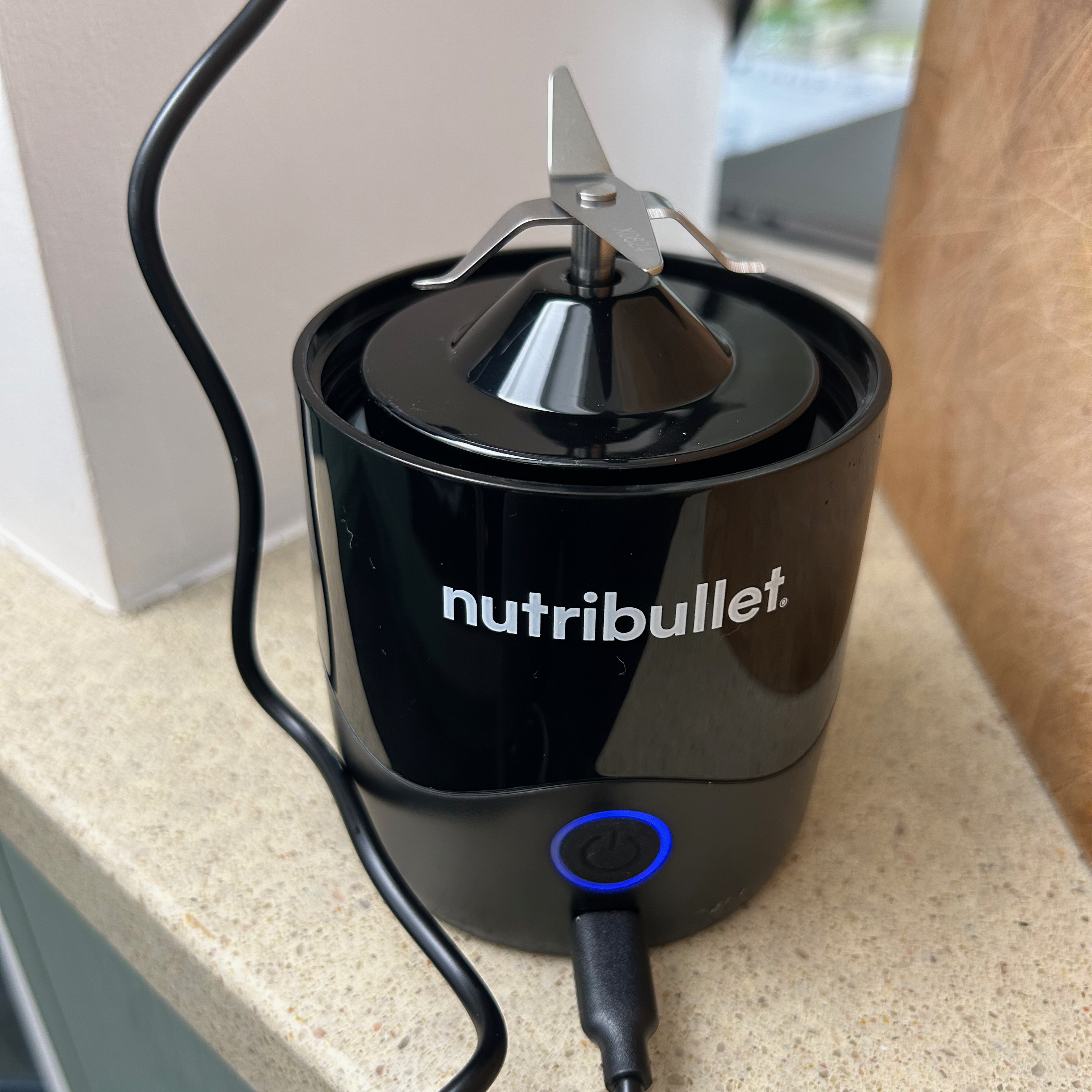
The lid screws on tightly and the big drinking hole is accessed by flipping a catch and then pressing a release button. This two stage process gives me faith that it won’t accidentally open itself in my gym bag.
What is it like to use?
The first drink I made in the Nutribullet Portable Blender was a carrot protein shake. I added coconut milk, grated carrot, cinnamon, nutmeg, protein powder and four ice cubes to the blender. However, every time I started blending, it stopped before the end of the 20 second cycle.
The first time it lasted 12 seconds, then 17 seconds, then 10 seconds, and finally 11 seconds. After this I realised that I had filled it beyond the MAX line, which is why it wasn’t happy. But here’s the thing, the ml/ oz volume lines go all the way to the top of the cup. So at first glance, it looks like you can fill it up to the top marker. It wasn’t until I paid more attention that I noticed the MAX line is actually about ⅔ up the cup.
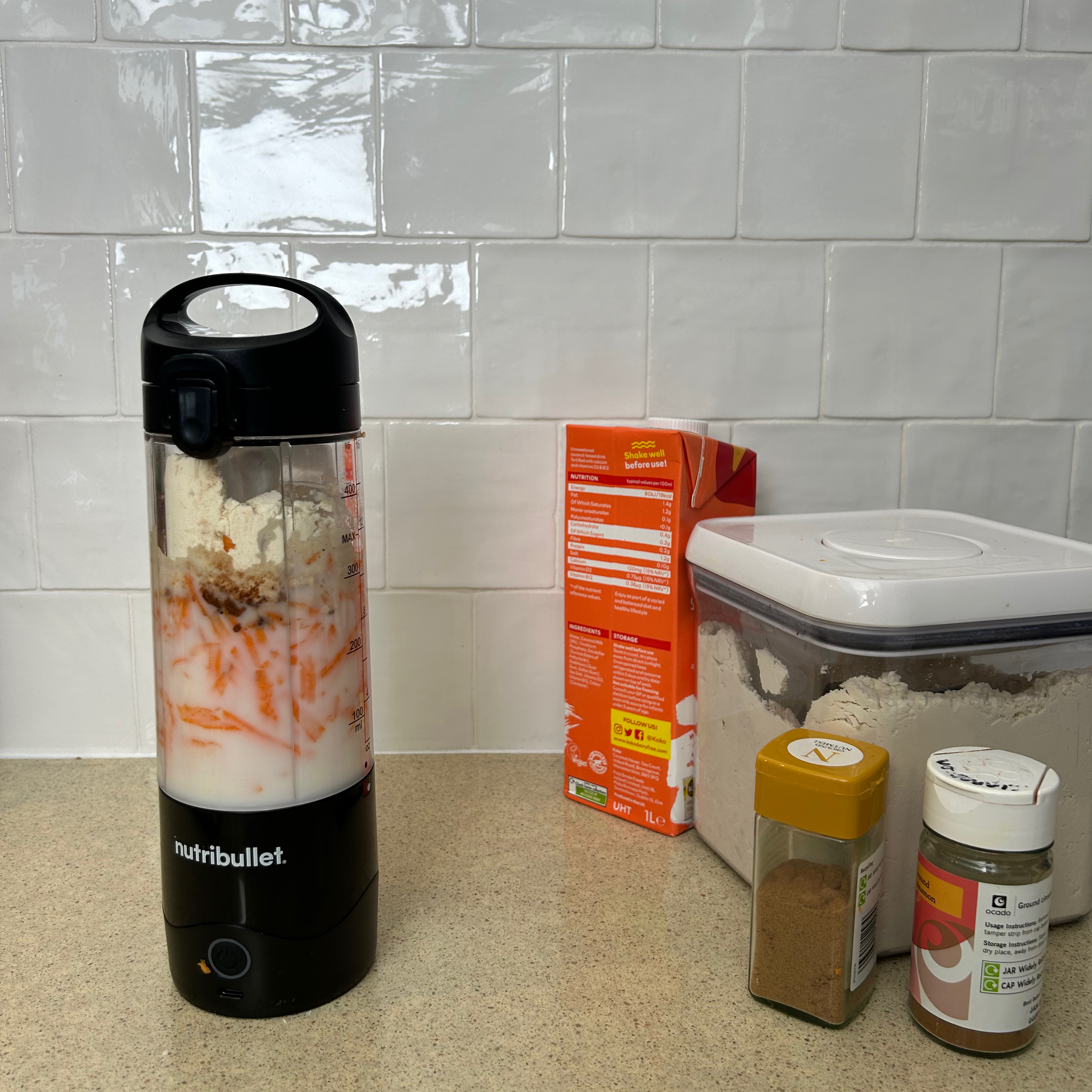
So I drank the somewhat gritty drink down to the max line and pressed start again. This time it blended for the full 20 second cycle. The drink was nicely mixed, the ice had been pulverised and the carrot was broken down to create a pulpy texture.
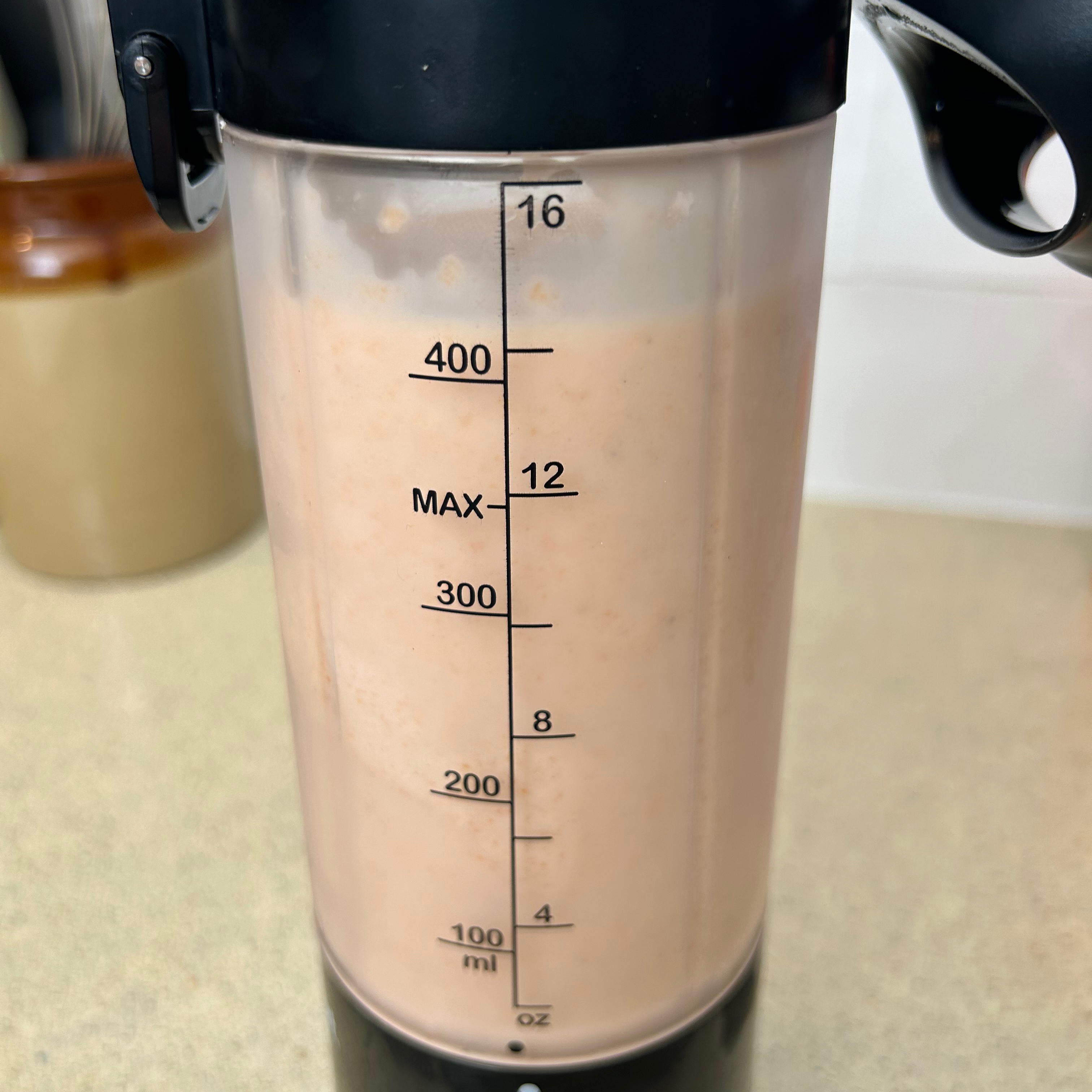
Next I made a chocolate banana protein shake with coconut milk, greek yogurt, sliced banana, protein powder and chocolate hazelnut butter. This time I was careful to only fill it up to the MAX mark, but this meant I couldn't fit in a whole banana if I wanted space for all the other ingredients too.
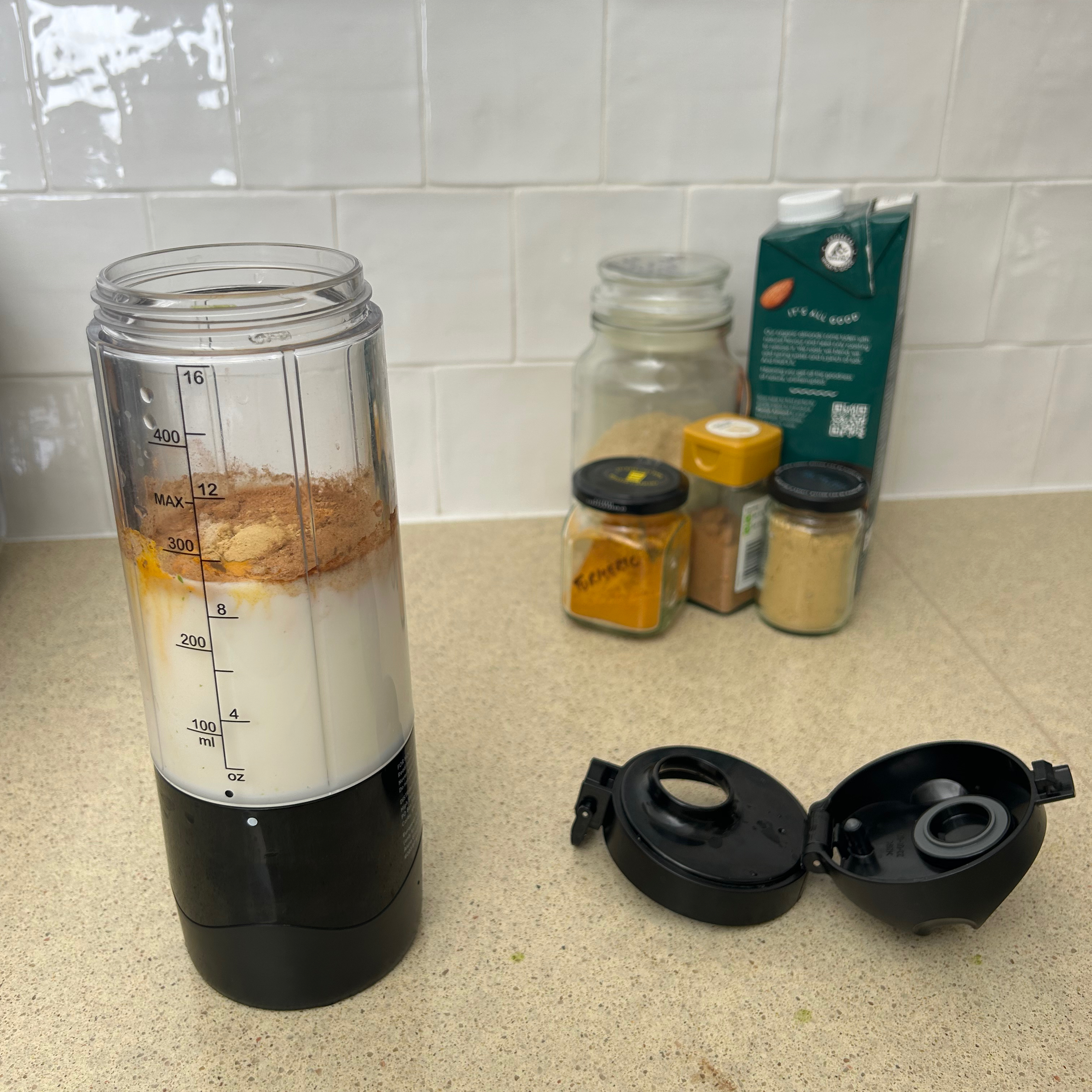
After the first 20 second blend there was a visible lump of protein powder stuck to the side of the cup, so did a second blend, which dislodged most of it. The drink was nicely mixed, the banana wasn’t completely pulverised. It wasn’t lumpy, but the drink had a pulpy, slightly fibrous texture, which I actually quite like.
It can’t be used for hot liquids, so when I wanted to make a turmeric latte, I blended the cold milk and spices together. Then I just poured the mixture into a mug and heated it in the microwave. This method worked well. And I was surprised that the turmeric didn’t stain the plastic cup.
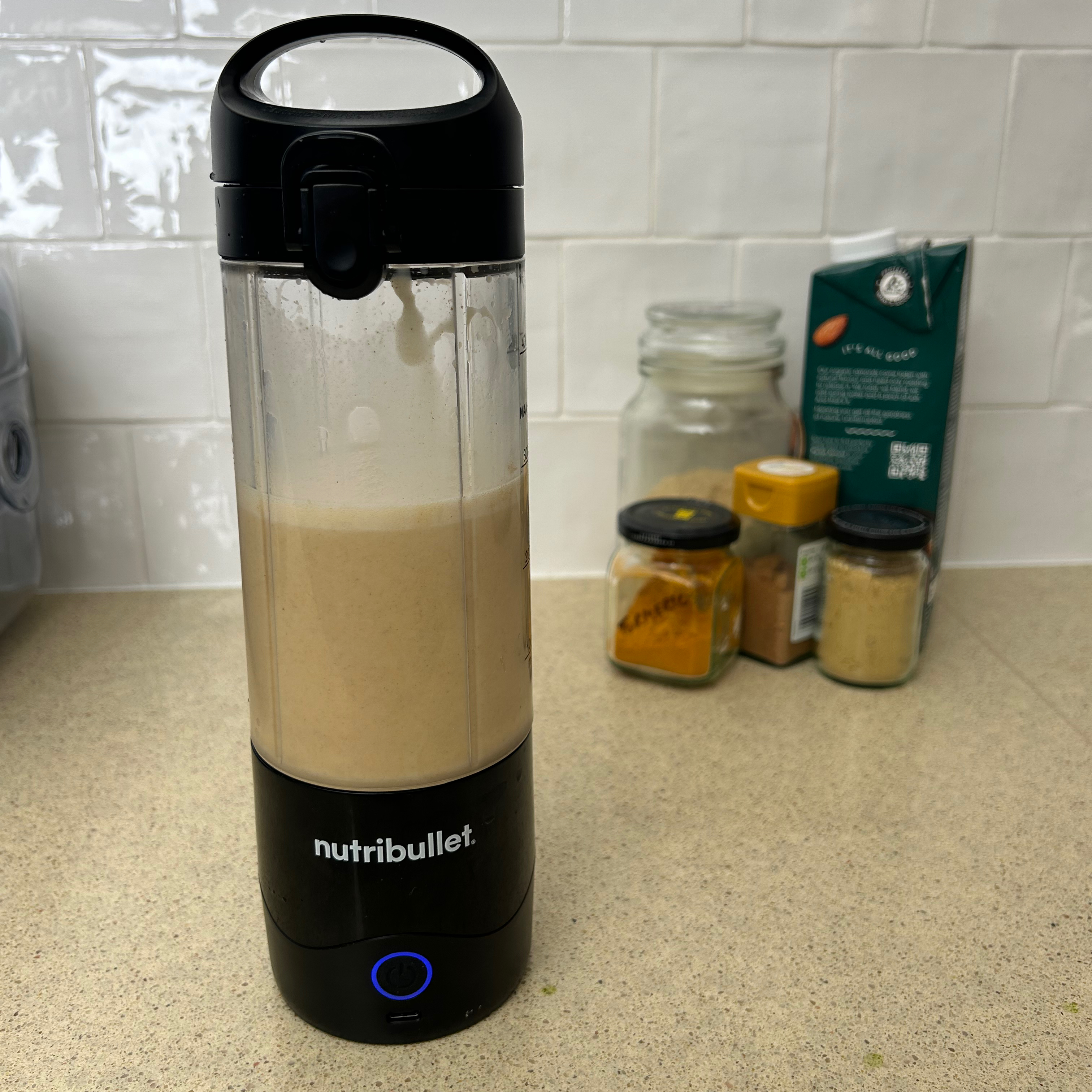
I was sceptical about how it would cope with big frozen berries, so I made a frozen berry smoothie to find out. It was simply frozen mixed berries, protein powder and milk. The frozen berry mix included blackberries, redcurrants, raspberries, blackcurrants, and a couple of quite big, whole strawberries.
The first couple of blends stopped short of the 20 second blend time, and the light flashed red to indicate a problem. I think it was a little over filled, so tipped out a small amount to get it back to the max fill line. Then blended it one more time.

The finished smoothie had a gritty texture because none of the seeds had been liquidised. This didn’t surprise me though, even some of the best blenders don’t blitz up small seeds. And the main thing was that all the berries, including the big strawberries that I was particularly concerned about, had all been blended into the drink.
The final smoothie I made was a green smoothie. It included coconut milk, a handful of spinach, a whole chopped kiwi, and half an avocado. After one 20 second blend everything looked pretty well mixed so I left it at that.
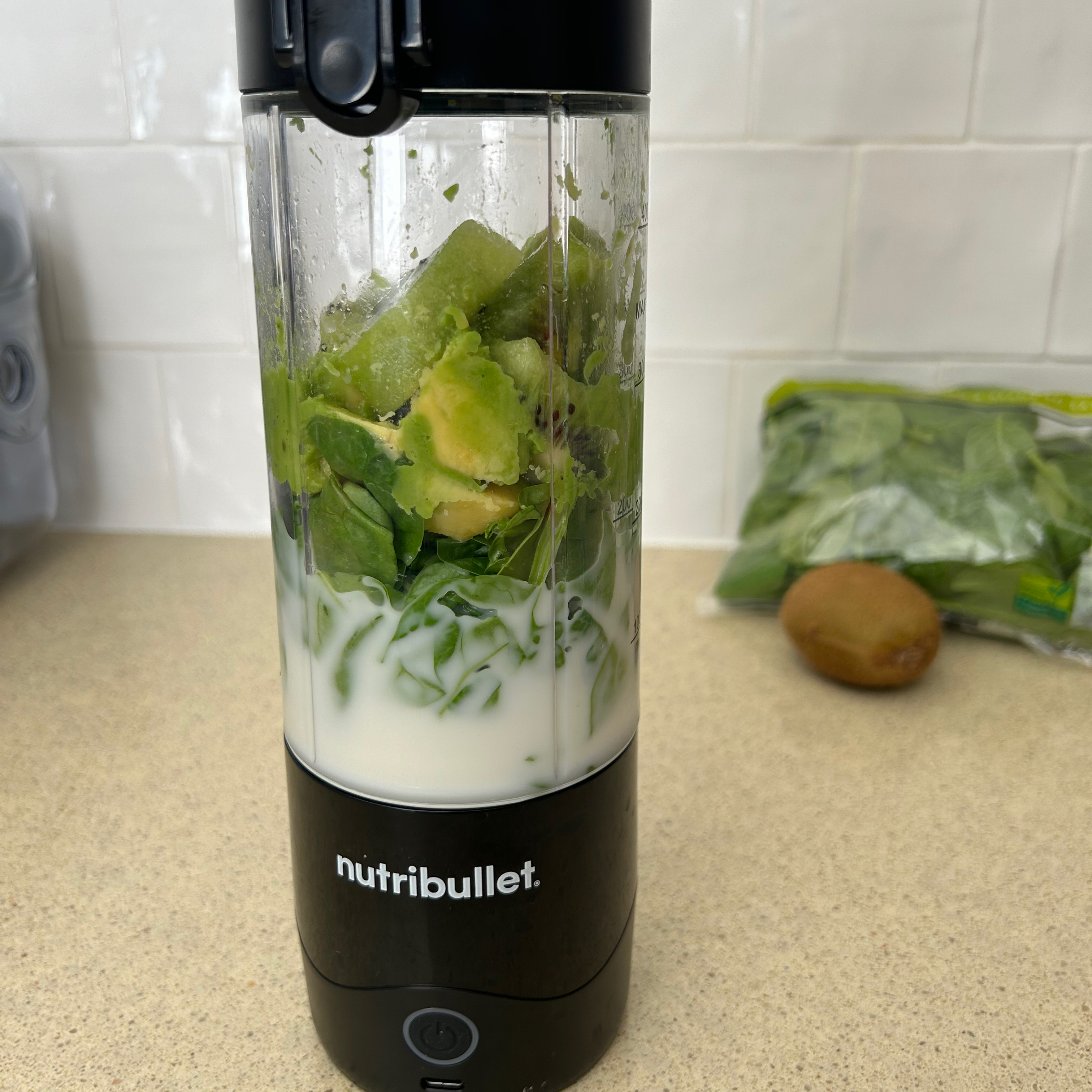
The smoothie was very thick, but apart from some tiny kiwi seeds, everything had been liquidised. And given that leaves can be tricky to blend, I was pleased that I didn’t come across any whole unblended spinach leaves. Though there was a 2cm piece of stalk right at the end of the drink which I can forgive considering it was only a 20 second blend.
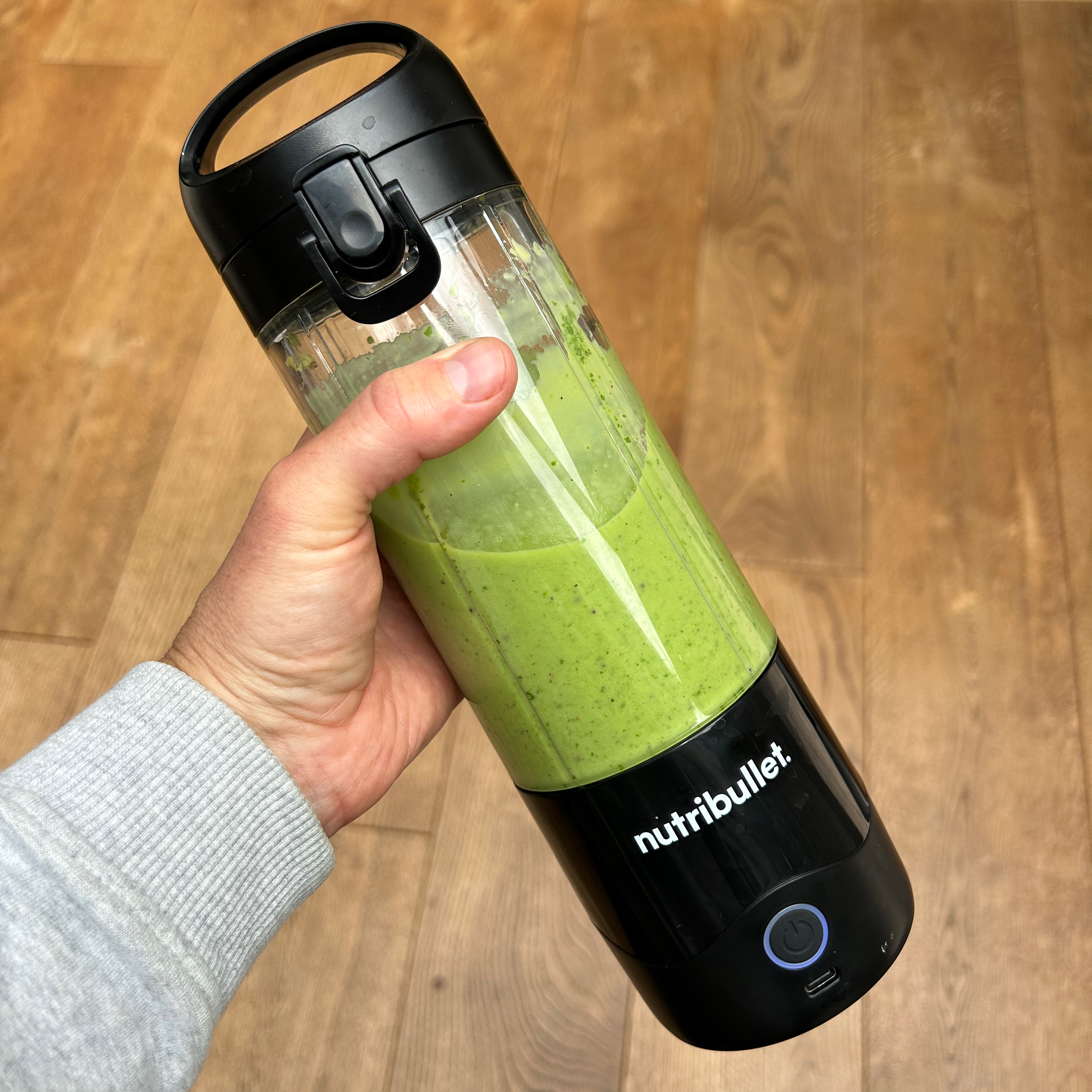
I also made a pancake batter using the pancake recipe in the instruction manual. The recipe says to blend oats into oat flour. This took two blend cycles and I gave it a bit of a shake during the second cycle to ensure all the oats got broken down.
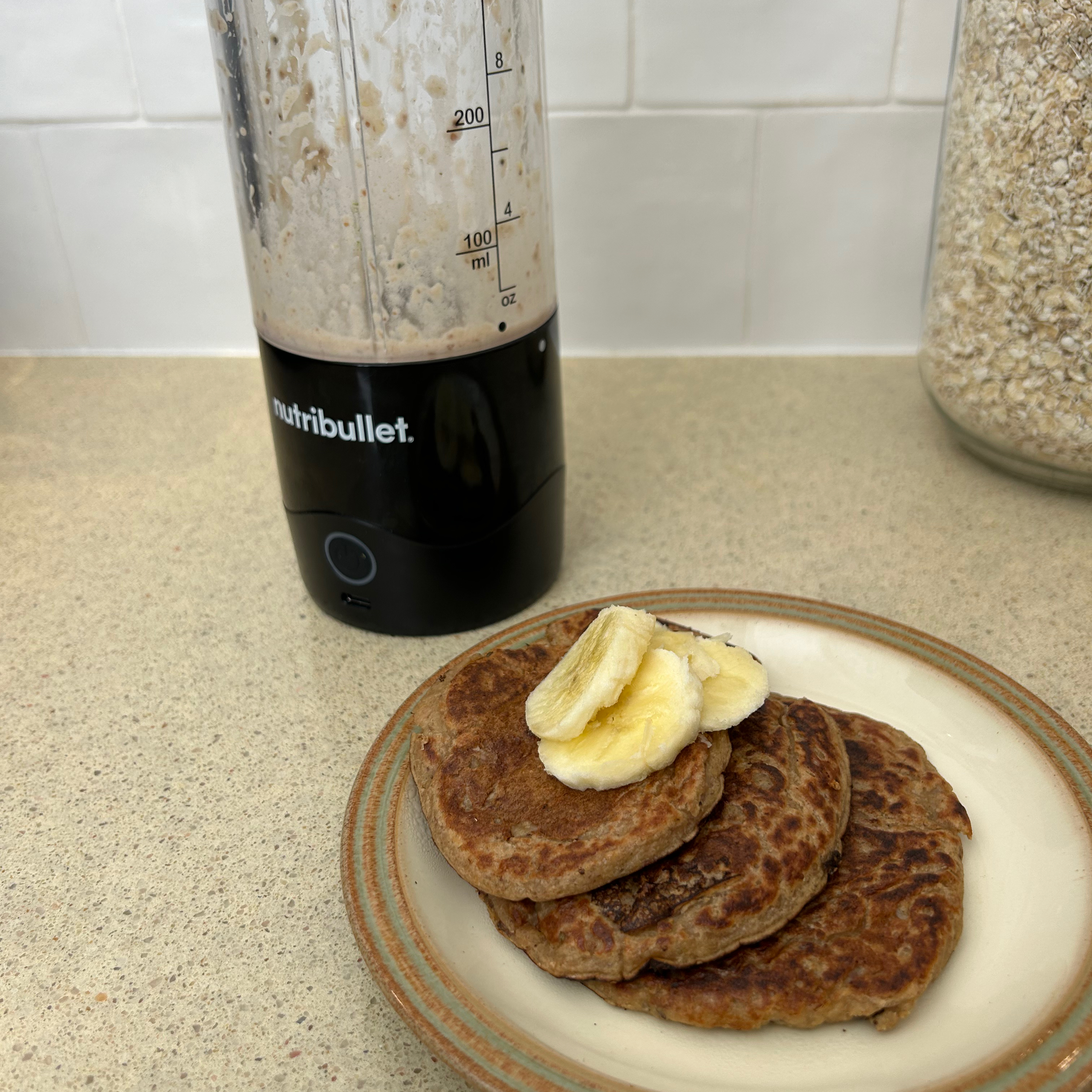
Then I added the rest of the ingredients including banana, milk, vanilla, cinnamon and flaxseed. It took a couple of 20 second blend cycles to create a thick pancake batter. And while I won’t be switching from my usual pancake recipe, the nutribullet did a great job at combining all the ingredients.
Finally I made a quick basil and chilli oil to drizzle over pasta. I added olive oil, a handful of basil leaves and a small red chilli that I’d just chopped in half. And after just one quick 20 second blitz I had a tasty, fresh dressing.
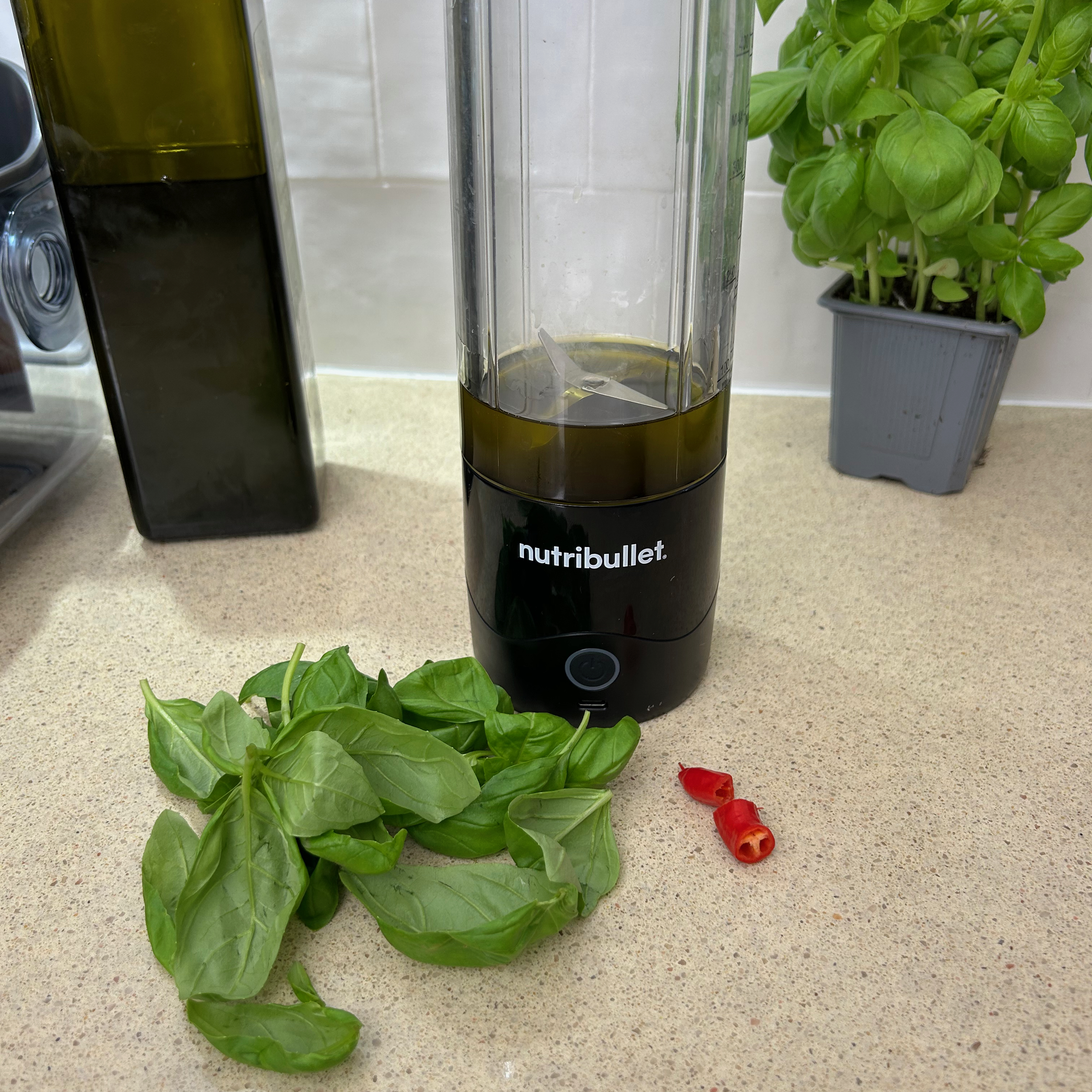
The battery lasted for around 15 blend cycles, which is exactly what Nutribullet claims. And a full recharge took just 70 minutes.
I measured the sound at 80dB when blending the turmeric latte. But this will vary depending on the ingredients you’re blitzing, obviously it’ll be louder if blending hard frozen ingredients.
Cleaning
After most uses, I found that as long as I cleaned them immediately, the cup and lid came clean with just a quick rinse. Thankfully though, they are also dishwasher safe, and after the greasy basil oil, I was more than happy to clean them in the dishwasher.
The blade is permanently attached to the motor base, so it has to be cleaned carefully. The manual says to rinse the blade but not to run the motor base under water, which is pretty tricky given that they are one and the same. I did my best to clean it without getting the base too wet. But it is a shame the blade section can’t be removed to make cleaning easier.
How does it compare to similar blenders?
If you don’t really need to blend on the go, the Nutribullet Pro 900 Series blender is a firm favourite at Ideal Home. The catch is that it’s double the price. But for that you get two larger capacity cups and 900W of blending power instead of the 100W offered by the Portable blender.
However, if the portable aspect is what you’re looking for, you should also consider the Ninja Blast from our best cheap blenders list. It has a slightly higher 470ml max capacity and the blend cycles are longer at 30 seconds. That said, you’ll only get 10 blend cycles before it needs a recharge.
Should you buy the Nutribullet Portable Blender?
I’m used to blitzing up huge smoothies in a big jug blender, and I found it tough to scale back. For me the drinks were just a bit too small. However, if you’re not greedy like me and you want the convenience of a battery powered personal blender, I was impressed with its ability to tackle most ingredients.
But it’s not just for smoothies, I love that it can make dressings and batters too, so it’d be great in a campervan or camping, allowing you to whip up a feast, but without taking up much space, or needing a constant power supply.
It won’t completely liquify all ingredients like some of the most powerful blenders you can buy, but for a small rechargeable blender, that’s to be expected. All-in-all for an affordable compact blender on the go, it’s a great option.
About this review, and the reviewer
After completing a Home Economics degree, Helen went on to work for the Good Housekeeping Institute and has been reviewing home appliances ever since. She lives in a small village in Buckinghamshire in the UK, where she reviews all sorts of home and garden appliances using her wealth of experience.
Helen used this blender at home for a week, making a variety of breakfast style smoothies, protein shakes and more. She tried to use a varied mix of ingredients to see how well it coped with everything from frozen berries, to spinach leaves and seeds.







